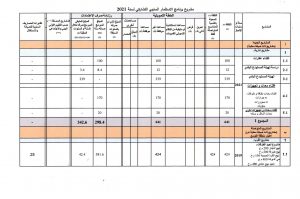Oftentimes the markup cited will only include variable costs and not include costs such as rent, depreciation, maintenance, and others. Knowing your markup, markup percentage and profit margin numbers are the best way to ensure your business is profitable. Larger profit margins (over 50%) means you are making more money on every service or product sold. Calculating markup on your products or services can get a little confusing, especially if you are new to business accounting. However, it’s super important that you stay on top of your numbers so you can make informed business decisions.
Markup by specific industries
For example, in retail businesses the markup is calculated as the percentage difference between the retail price, also known as the markup price, and the wholesale price. As an example, a markup of 40% for a product that costs https://www.bookkeeping-reviews.com/full-list-of-116-synchrony-store-credit-cards/ $100 to produce would sell for $140. Markup percentages vary widely between different industries, product lines, and businesses. For instance, some products will have a markup of 5% while others will have a markup of 90%.
- If COGS was entered as a negative figure in Excel, make sure to place a negative sign in front of the formula.
- The reason for the simplicity of this approach is that the markup percentage is set according to what is common in the industry, habits of the company, or rules of thumb.
- Whether you sell online or in a retail store, you can set the perfect price for each product.
- What these campaigns often “forget” to mention is that the markup is not how much the business makes in profit.
- Download CFI’s Excel template to advance your finance knowledge and perform better financial analysis.
thoughts on “Markup Calculator”
Therefore, there is no “normal” markup percentage that applies to all products, although there may be an average for a particular industry. Learn more about industry analysis in CFI’s Financial Analyst Training Program. This is because a markup of 100% implies that your profit equals your cost, and profit is the difference between the revenue and cost. This markup calculator was one of our first difference between discount and rebate with example financial calculators that got a lot of love from our users. It’s just one of those tasks that salespeople have to perform often — they enjoy the flexibility of our tool (and the fact that they don’t have to know how to find markup). For example, the restaurant industry uses relatively high markup ratios, but the profitability of the sector is generally low as the overhead costs are high.
Markup Percentage vs Gross Margin
Over 1.8 million professionals use CFI to learn accounting, financial analysis, modeling and more. Start with a free account to explore 20+ always-free courses and hundreds of finance templates and cheat sheets. In this case, the company’s product revenue was $10 million, while its cost of goods sold (COGS) was $8 million.
How to Calculate Markup Price
Since markup is the difference between the selling price and the cost of the product, there is no such thing as an average markup price. For instance, the gross profit margin divides a company’s gross profit by revenue, which equals revenue less the cost of goods sold (COGS). In order to make the markup price metric more practical, the markup can be divided by the average unit cost to arrive at the markup percentage. Using an alternative approach, the markup percentage can be calculated by taking the gross profit and dividing it by the cost of goods sold (COGS). Further, one of the most influential decisions on a company’s profit margins is the pricing of its products/services.
The markup and gross profit margin of a particular company are closely tied concepts. Markup refers to the difference between the selling price of a https://www.bookkeeping-reviews.com/ good or service and its cost. In other words, it is the premium over the total cost of the good or service that provides the seller with a profit.
If COGS was entered as a negative figure in Excel, make sure to place a negative sign in front of the formula. If you don’t receive the email, be sure to check your spam folder before requesting the files again. By submitting this form, you consent to receive email from Wall Street Prep and agree to our terms of use and privacy policy.
The markup price represents the average selling price (ASP) in excess of the cost of production per unit. Upon subtracting the unit cost from the average selling price (ASP), we arrive at a markup price of $20.00 per unit. To calculate the selling price for your products, simply use the free Markup Calculator. All you’ll need to do is plug in the cost and your preferred markup percentage, and the calculator will generate the selling price for you. The Markup Price is the difference between a product’s average selling price (ASP) and the corresponding unit cost, i.e. the cost of production on a per-unit basis.
 العربية
العربية


